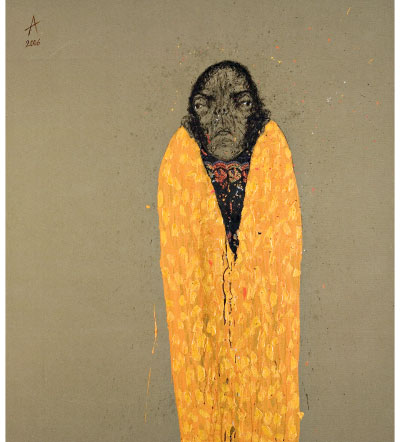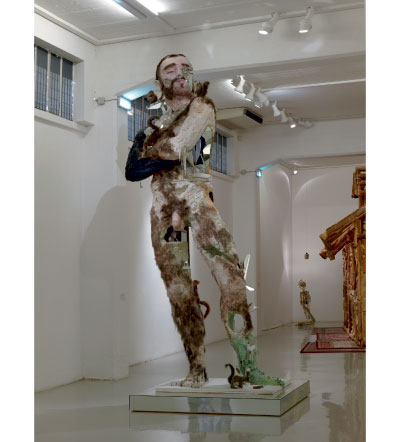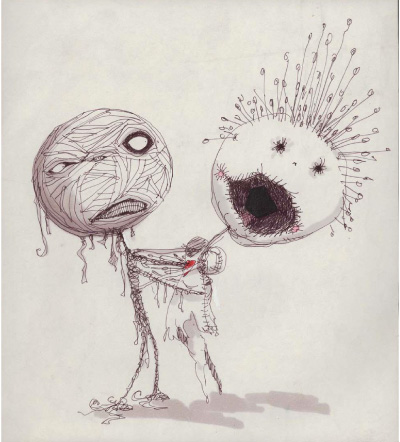
Sabhan Adam, Untitled (Figure in Yellow Coat), 2006, Private Collection, London
“It is a very exciting time for Middle Eastern artists: there is a real spirit of innovation and creativity in the air,” the famed architect Zaha Hadid, who is based in London but hails from Iraq, writes in the foreword to the newly released The Art of the Middle East.
Here’s a personal note just to put things in better perspective: When I began reporting on Middle Eastern arts and culture, some fifteen years ago, there were but a handful of notable players worth writing about — or so it seemed at the time. Now, as this book makes all too clear, not only are there enough artists to fill a hefty, 300-page coffee-table book but the number has swelled to the extent that such a compendium can’t make enough room for all of them. As thoroughly exclusive as The Art of the Middle East tries to be, several people — most notably the Hugo Boss Prize winning Palestinian artist Emily Jacir, who had her own retrospective at New York’s Guggenheim last Spring — have been left out. The author, Saeb Eigner, a British-Lebanese financier and self-assigned Arab arts champion (his credentials include acting as the senior adviser for the British Museum’s exhibition Word into Art: Artists of the Modern Middle East) apologizes for the omissions in the Afterword.
He’s forgiven. Especially since this book is so beautifully and impressively rendered.




 Facebook
Facebook Permalink
Permalink Digg
Digg Reddit
Reddit LinkedIn
LinkedIn StumbleUpon
StumbleUpon Tumblr
Tumblr



